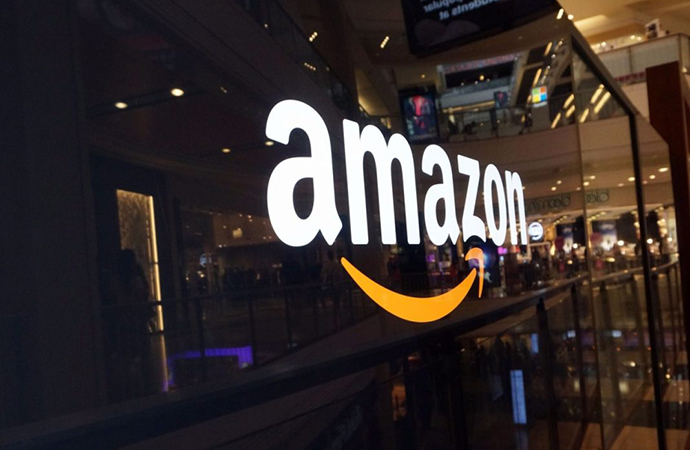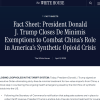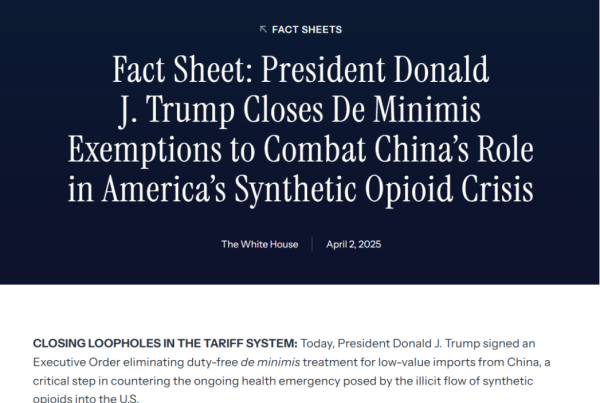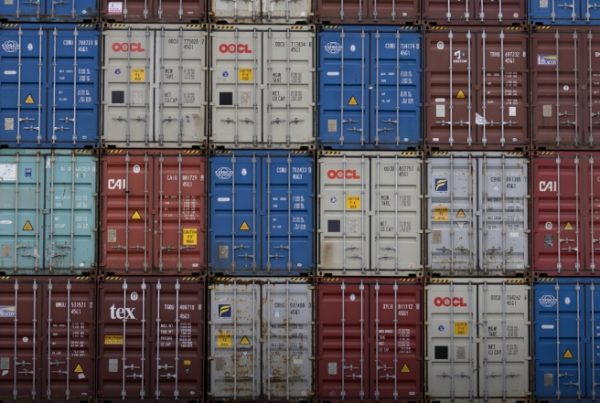An Inside Look at Aggressive Market Strategies
According to Cross Border Observers, Temu has set an audacious GMV (Gross Merchandise Volume) target of USD 30 billion for 2024 – more than twice what it achieved this year. In comparison, SHEIN, which has been operating for ten years, reached a global GMV of USD 29 billion in 2022. Temu is a full-category e-commerce platform focusing on low-priced, small-ticket items, while SHEIN primarily sells fashion apparel.
A Decade of Fierce Competition
Shifting Dynamics in Cross-Border E-Commerce
The year 2023 was the most intense in a decade for China’s cross-border e-commerce, yet it might be the mildest in terms of competition in the next ten years. Over the past decade, SHEIN evolved from a niche wedding dress exporter into a fast-fashion unicorn with an estimated valuation of USD 66 billion and over USD 29 billion in annual sales. Meanwhile, Alibaba International Digital Commerce generated an annual revenue of USD 6.92 billion, becoming the second-largest income source for Alibaba Group.

This year, Pinduoduo’s cross-border e-commerce platform Temu rose rapidly, and TikTok Shop has been aggressively expanding. In recent years, the parent companies of these platforms—Pinduoduo and ByteDance—have consistently achieved remarkable growth domestically, adding new dimensions to global competition.
Today, SHEIN, Temu, TikTok Shop, and Alibaba International Digital Commerce are collectively known as the “Four Little Dragons Going Global.” A Google insider remarked, “Temu’s aggressive spend and rapid growth are unprecedented, not only among Chinese outbound companies but also on the global stage.”
Over the past year, Temu has launched in 47 countries. Its mobile app has been downloaded 200 million times, with 120 million opens recorded in September alone—half of which came from outside the United States. Earlier in 2023, Temu had set a global GMV target of USD 16 billion for the year—roughly matching the GMV SHEIN accomplished in the U.S. in 2022. Cross Border Observers estimates that Temu will achieve a GMV of USD 14 billion for 2023.
Strategies and Tactics in the Global Arena
Temu’s Bold Moves vs. SHEIN’s Steady Course
In contrast to Temu’s rapid expansion, SHEIN has not focused on pricing wars this year; instead, it continues to emphasize profitability as an internal metric while deepening its supply chain for a long-term contest.
- TikTok Shop:
After its full U.S. launch in October, TikTok Shop set a “Black Friday” daily sales target of USD 16 million. Data from FastMoss indicated that by early November, TikTok Shop’s U.S. daily transaction value had already surpassed USD 10 million. TikTok opted not to expand rapidly into multiple countries like Temu, but instead shifted resources from Brazil and Southeast Asia to intensify efforts in the U.S. market. - Alibaba International Digital Commerce:
Under the leadership of Jiang Fan, the platform experienced significant growth. In the quarter ending September 30, orders in Alibaba International Digital Commerce’s retail business increased by 28% year-over-year, while overall revenue surged by 53%. Jiang Fan is particularly focused on AliExpress, which has set a target to double its GMV in Korea compared to last year.
One high-level executive from a major outbound brand summarized: “This is the final breakout battle for Chinese Internet e-commerce companies.” With Temu’s GMV target for next year at USD 30 billion, and with about 9% of Americans placing orders on its platform over the past year, its September GMV is already approaching that of SHEIN—a company that has been operating for more than a decade. In September, Temu attracted 120 million product views and dispatched an average of 1.6 million packages per day—most of which are shipped by sea to the U.S.
Behind this rapid expansion lies a massive marketing budget. Several sources close to Temu mentioned that this year its marketing spend ranges between USD 2 billion and USD 3 billion. From the project’s inception, Pinduoduo management had planned to continuously invest in Temu and was prepared for three years of losses. One Google insider even noted that Temu’s spending budget for next year will far exceed this year’s figures, though specific numbers have not been disclosed yet. Temu is currently in talks for a second collaboration with the “American Super Bowl” project group.
Super Bowl and Beyond
High-Stake Advertising and Operational Challenges
The Super Bowl is America’s annual carnival for NFL champions, reaching over 100 million Americans. In February this year, Temu spent USD 14 million (approximately RMB 95.5 million) to secure two 30-second advertising slots, with each second valued at USD 230,000—a record high for the event and making Temu the youngest brand ever to advertise during the Super Bowl. That very night, Temu’s app downloads surged by 45%, and its daily active users grew by 20%.
Temu spares no expense in buying traffic. An advertising agent described Temu as “a traffic-devouring black hole.” The platform continuously invests heavily in advertising across every country it operates in, consistently ranking first in download charts on various app stores worldwide. According to TechMedia 36Kr, the cost per single Temu order is roughly USD 32, with logistics costs accounting for USD 8 to USD 9. When adding in logistics and marketing expenses, Temu continues to operate at a global loss, though its loss rate in the U.S. is slightly lower.
One secondary source commented that Temu’s early losses during the market expansion phase were a trade-off for achieving a larger market presence. What remains crucial is whether users will continue to stay after subsidies are reduced. Cross Border Observers previously reported that Temu’s management had recently reduced marketing expenses in the U.S. in favor of investing in faster-growing markets. With reduced ad spending in the U.S., one data analyst for an outbound e-commerce platform noted that Temu’s U.S. sales declined in September compared to August. Another source close to Temu attributed the slowdown partly to increased management focus on compliance issues. Employees have reported receiving a string of compliance-related questions from Pinduoduo COO “Abu” via WeChat at odd hours.
In early October, a supplier in Guangzhou’s Panyu district put up a banner outside Temu’s office. The dispute arose when the supplier, which also supplies SHEIN, mistakenly sent apparel with SHEIN’s wash labels to a Temu warehouse. Temu sold the merchandise without proper inspection, prompting SHEIN to file for a temporary restraining order in a U.S. federal court to freeze the supplier’s funds. The supplier argued that it was merely a provider to Temu and that the platform should be responsible, citing urgent cash flow needs by protesting with the banner. Following the incident, Temu strengthened its quality checks, disallowing any branded wash labels on apparel – with any violations leading to a full return of the stock.
A merchant noted that Temu has recently introduced a feature whereby if a seller uploads a raw photo containing shooting parameters, any similar product images lacking such metadata will be taken down. The platform assumes that images not meeting these criteria are copied from the web. This policy mirrors those of established platforms like Amazon regarding intellectual property enforcement.

Competitive Phases: Temu vs. SHEIN
Three Stages of Response
During its year-long presence, Temu’s most direct competitor, SHEIN, has approached the challenge in three stages:
- Phase One: From early 2022 when Temu started its global market research until February of this year, SHEIN viewed Temu as a potential threat and primarily engaged in litigation. SHEIN accused Temu of paying social media influencers to disparage SHEIN and of creating fake accounts to promote Temu, causing consumers to mistake the brands as identical. Conversely, Temu contended that SHEIN required suppliers to sign exclusivity agreements that restricted them from supplying to Temu. These lawsuits were withdrawn by both sides at the end of October without public explanation.
- Phase Two: After Temu’s Super Bowl debut in February, SHEIN observed that Temu’s sales in the first two quarters had exceeded USD 2 billion, and the overlapping visitor base had jumped from a low single-digit percentage to the high single digits. In response, SHEIN intensified competition by listing Temu’s popular products and similar items, even engaging in price comparisons.
- Phase Three: Since September, Temu’s U.S. GMV in September nearly approached that of SHEIN, prompting an internal sense of urgency at SHEIN. The company is now committed to competing across all categories and age groups throughout the year. Currently, SHEIN is working to boost the share of non-fashion categories—from less than 20% last year to around 40% of total sales. Despite the escalating competition, SHEIN continues to avoid a fierce price war, placing higher emphasis on profitability.
On November 7, reports indicated that SHEIN’s profit for 2023 is estimated at USD 2.5 billion, an increase of 150% compared to last year. This year, SHEIN has also mandated that for certain identical products, the price must not exceed that on Temu’s platform. Should the price be higher, SHEIN will look for suppliers with lower costs or provide modest subsidies on the platform. One marketing insider revealed that while SHEIN does offer subsidies, they are capped – and if a product on Temu is aggressively low-priced, SHEIN might opt to remove it entirely. Another source, close to SHEIN, mentioned that even when entering new markets, SHEIN cannot afford to subsidize at a loss; instead, it prefers to ramp up market investments once a natural traffic ratio is reached. Even during peak periods such as Black Friday, SHEIN aimed for a breakeven point mainly due to high air freight costs associated with cross-border shipping.
One outbound entrepreneur commented that for SHEIN, the current priority is stockpiling resources to endure a prolonged consumption battle, since Temu is backed by Pinduoduo’s resources, whereas SHEIN stands on its own. Alongside rising profits, SHEIN’s sales have also seen significant growth. According to tech media The Information, SHEIN’s revenue for the first nine months of this year is expected to reach USD 24 billion—a 40% year-over-year increase—with an anticipated 40% annual growth target, continuing to outpace Zara in sales.
In addition to focusing on profit and growth, SHEIN is also enhancing its suppliers’ operational capabilities and deepening supplier relationships to bolster its supply chain advantages. This year, SHEIN began sharing front-end product sales data with suppliers. In the past, suppliers would receive orders every few days without knowing real-time sales performance. Now, with access to daily sales data, suppliers can prepare by producing smaller batches ahead of potential surges, thereby avoiding stockouts—a marked change from the “small order, quick return” model where factories rarely kept extra stock. This strategy also allows SHEIN to tie certain styles to designated suppliers, helping them to scale up. Additionally, SHEIN has made available specific customer complaint details and product reviews to suppliers to help improve production processes.

TikTok Shop and Alibaba’s International Ambitions
Overcoming Regulatory Hurdles and Expanding Local Operations
TikTok Shop (TTS) did not take the fastest route among recent outbound e-commerce platforms, but its journey has been notably winding. According to an early TikTok employee, from the day TikTok decided to enter e-commerce, its primary target was the U.S. market. However, in or around September 2020, then-President Trump issued an executive order demanding that TikTok be removed from the U.S. and that it be separated from its parent company, ByteDance. Consequently, TTS initially piloted in the United Kingdom and Indonesia.
In February 2021, when TTS launched in Indonesia, only local merchants were allowed to open shops. It wasn’t until the following year—after TTS expanded into Thailand, Vietnam, and Malaysia—that cross-border registrations were permitted, leading to a global GMV of USD 4.4 billion that year, mostly contributed by Indonesian local sellers. Many of these “local merchants” are Chinese businesspeople who established companies locally, shipping goods from China to nearby warehouses so that deliveries could be made within 3–4 days.
In September this year, Indonesia banned social media platforms from serving as sales channels and mandated that e-commerce platforms set a minimum price of USD 100 for imported goods, delivering a significant setback to cross-border operations. Following Indonesia’s restrictions, platforms such as Lazada and Shopee began to phase out their relatively small cross-border segments.
Focusing on local merchants is considered safer—both from a business perspective (as local sellers understand the market and can ensure prompt logistics through local warehouses) and from a geopolitical risk standpoint, since some countries impose cross-border limits to protect local trade.
In November of last year, TTS began testing the U.S. market with local merchants only, but with extremely high entry standards: corporations needed to provide U.S. company licenses and the personal identification (passport/driver’s license and contact details) of the person in charge; individual sellers were required to show a U.S. passport or driver’s license and must have a local warehouse to ensure delivery within three days. Even after launching in the U.S. for four months, there were fewer than 100 U.S. domestic sellers actively selling on TTS.
Therefore, TTS shifted its focus this year to prioritize its cross-border business. In May, TTS appointed its Southeast Asia head to oversee cross-border operations, reporting directly to TikTok’s e-commerce chief. In April, TTS launched a full-service (all-in) cross-border model in the U.K. and Saudi Arabia, where sellers only needed to stock their goods in TTS’s domestic warehouse, while the platform handled storage, delivery, and after-sales services. Merchants would either manage their own shops or have the platform operate them on their behalf; they only provided the supply price, and the final retail price was set by the platform. This all-in model—pioneered by Temu in September last year—allows the platform to control pricing and logistics in order to meet both low-price and delivery performance demands.
TTS began a small-scale pilot of its all-in model in the U.S. market in August. To support the U.S. launch, TTS even redeployed its original team from Brazil, which was initially tasked with expanding local merchant operations. TTS had originally planned to enter Brazil later this year, but hearing that SHEIN also intended to tap that market, they assembled a roughly 20-person team to get a head start. However, after only three months, TTS quickly withdrew from the Brazilian market—citing both compliance risks with Chinese merchants’ shipments through Brazilian customs and a need to concentrate resources on the U.S. market.
In March this year, TikTok CEO Zhou Shouzhi was grilled by U.S. Congress members on topics that included his relationship with TikTok and ByteDance, user data security, misinformation, and harmful content for children. TTS was initially ready for a full U.S. launch in July, but numerous compliance issues delayed the rollout until late October. The sales target set by TikTok for Black Friday in the U.S.—at USD 16 million per day—is modest when compared to Temu’s U.S. daily sales of over USD 45 million.
The various regulatory challenges faced by TikTok over the past few years are emblematic of the struggles experienced by Chinese tech companies going global, and they may well foreshadow the challenges ahead for future outbound e-commerce platforms. Currently, Temu is placing a greater emphasis on compliance risks, while SHEIN’s recent inclusion of new international shareholders may help the platform better handle future uncertainties.
Over the past year under the guidance of Jiang Fan, Alibaba International Digital Commerce has become the fastest-growing arm within Alibaba Group. In the first half of this year alone, its international digital commerce revenue increased by 47% year-over-year; in the quarter ending September 30, revenue growth hit 53%, and losses narrowed by 48%, largely due to improved profit margins at Lazada and Trendyol. Alibaba International Digital Commerce’s portfolio includes longstanding cross-border wholesale operations like the International Station, the cross-border retail platform AliExpress, Southeast Asia’s Lazada, Turkey’s Trendyol, Spain’s Miravia, and South Asia’s Daraz.
Among these, AliExpress and Temu share a significant overlap in their target audiences—both catering to cost-conscious buyers. However, their key markets differ: AliExpress is focusing on emerging markets such as Latin America and the Middle East, whereas Temu is primarily targeting North America and Europe. This year, AliExpress has been localizing more aggressively; for example, in Korea it hired actor Ma Dong-seok as a spokesperson and rolled out a five-day delivery service locally. In September last year, as Temu officially launched and introduced its all-in model, AliExpress subsequently launched a “Choice” channel—now covering over 50 countries and regions. The Choice channel is populated by full-service stores similar to Temu’s model, where merchants ship goods from their warehouses and the platform takes care of operations and delivery. The key difference is that for Choice, the final product price is a joint decision between the merchant and the platform, whereas Temu’s merchants only provide their supply price and the final price is set entirely by the platform. Temu has also implemented a bidding system, with some merchants reporting receiving price reduction prompts two or three times a week—failure to comply might result in restricted stocking or product removal.
An AliExpress official mentioned that Alibaba aims to differentiate itself from Temu; low price is not the only or highest metric for evaluating merchants on AliExpress. Instead, price, service, and product quality are all considered equally important. In just one month since launching the Choice channel, orders on AliExpress increased by more than 50% year-over-year, with growth in Korea exceeding 100%. One of AliExpress’ current advantages is its order fulfillment speed. Leveraging Cainiao, AliExpress now offers “5-day delivery and late arrival compensation” in markets like the U.K., Spain, the Netherlands, Belgium, and Korea, along with multilingual customer service and free returns.
For later entrants like Temu, rapid expansion is crucial but comes with several challenges—such as building a robust fulfillment infrastructure. In March this year, rapid order growth led to overloaded warehouses in Guangdong, delaying shipments for over half a month. Currently, Temu works with more than 20 logistics providers, with most packages taking 7–8 days to reach U.S. customers.
The global market abounds with enormous opportunities yet is riddled with geopolitical complexities. This is no longer a blitzkrieg that can be resolved by throwing money at the problem, but rather a prolonged battle requiring sustained long-term investment. Cross Border Observers promises to continue monitoring the expanding outbound e-commerce landscape.







Temu’s ambition to hit $30B GMV in 2024 is just wild. You gotta love the hustle!,
SHEIN’s decision to share real-time sales data with suppliers is a game-changer for managing inventory.,
All these companies shifting funds globally makes me wonder – who really wins when the dust settles?,
At the end of the day, profit margins matter. Temu’s rapid growth might come at a cost if users don’t stick around post-subsidy.
TikTok Shop’s high entry barriers in the US might limit sellers, but quality over quantity, right?,
The aggressive marketing spend of $2-3B is insane – this is a war of attrition in global e-commerce.,
The ‘four little dragons’ challenge is real. Watching Alibaba, TikTok, SHEIN, and Temu battle it out is epic.,
It’s fascinating how compliance issues and logistics challenges could slow down even the fastest-growing platforms.,
7-8 day delivery from China to the US? That’s a bottleneck right there – hope they smooth out the kinks soon.,
Temu’s global rollout in 47 countries in a year is nothing short of impressive – talk about scale!,
Seeing TikTok Shop shift all resources to the US market shows just how strategic these companies are.,
SHEIN and Temu are like the David and Goliath of e-commerce, but both are packing a serious punch.,
Pinduoduo backing Temu and planning for 3 years of losses? Risky move, but it might just pay off.,